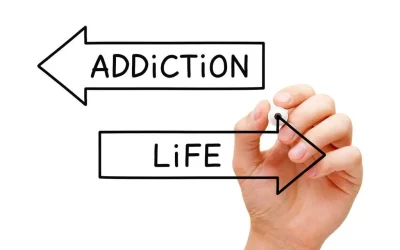OUD is a medical condition that can affect anyone – regardless of race, gender, income level, or social class. Like many other medical conditions, evidence-based treatments are available for OUD, but seeking treatment remains stigmatized. Stigma can be a major barrier to how well prevention and treatment programs work amid the opioid crisis. In addition, women have a unique set of risk factors for opioid use disorder. Compared with men, women also are more likely to be prescribed opioid medicines, to be given higher doses and to use opioids for longer periods of time. Women also may be more likely than men to become dependent on prescription pain relievers.
- And of all drug overdose deaths in the U.S. in 2018, two out of three involved opioids, according to a report by the U.S.
- You might be more likely to relapse when you’re under stress or if you’re exposed to other powerful triggers.
- These symptoms can occur within hours of their last use and can last for days to weeks.
Warning Signs and Symptoms

It involves family and friends and sometimes co-workers, clergy or others who care about the person struggling with addiction. If you’re currently taking prescription opioids and are concerned you may be developing a use disorder, talk to your healthcare provider immediately. This article discusses the behavioral and physical symptoms of OUD. It also discusses its cognitive and psychological symptoms, the DSM-5-TR diagnostic criteria for OUD, and signs of opioid overdose. Finally, it outlines how to find support for OUD and the side effects of the opioid crisis. Ask yourself some questions about your loved one’s personal risk of opioid use disorder and the changes you’ve seen.

What are the risk factors for opioid use disorder?
Once the drugs are out of the person’s system, continuing treatment is recommended to avoid relapse ― resuming opioid use after quitting. Opioid use disorder is a complex disease, and treatment works best when tailored to the individual. There is not a single approach that works well for everyone, and a person may try several therapies before finding the ones that support lasting recovery.
Warning Signs Ahead: CDC’s Opioid Shift Raises Red Flags for Workers’ Comp – Workers Comp Forum
Warning Signs Ahead: CDC’s Opioid Shift Raises Red Flags for Workers’ Comp.
Posted: Mon, 20 Mar 2023 07:00:00 GMT [source]
What is Opioid Overdose?
- Rapidly delivering all the medicine to your body can cause an accidental overdose.
- If you think your doctor doesn’t understand your level of pain, or that they meant you should take it whenever you need to, it may be a warning sign.
- Finally, when someone is on opiates, they may resort to extreme behavior, either because of how the drugs have altered their thinking or to support their addiction.
- Participating in self-help programs, such as Narcotics Anonymous, can also play a significant role in OUD treatment.
- When this takes place under medical supervision, it is termed “medically managed withdrawal.”
Your loved one also is at greater risk of opioid use disorder if they get opioids without a prescription. And using opioids illegally increases the risk of drug-related death. Illegal drugs taken without a prescription may include substances that signs of opioid addiction could be deadly. These drugs also may contain opioids that are much more powerful than medicines prescribed by a healthcare professional, such as fentanyl and carfentanil. People who use opioids illegally often turn to heroin and street fentanyl.

Neonatal opioid withdrawal syndrome (NOWS)
- This program is ideal for educating patients and their families, school faculty and staff, behavioral and mental health professionals, and more.
- Opioid abuse can lead to many long-term health problems and even death.
- As with all types of drug or alcohol addiction, having a family history of substance abuse increases the risk of developing dependence.
- Effective treatments for OUD include several medications, counseling, and behavioral therapy.
